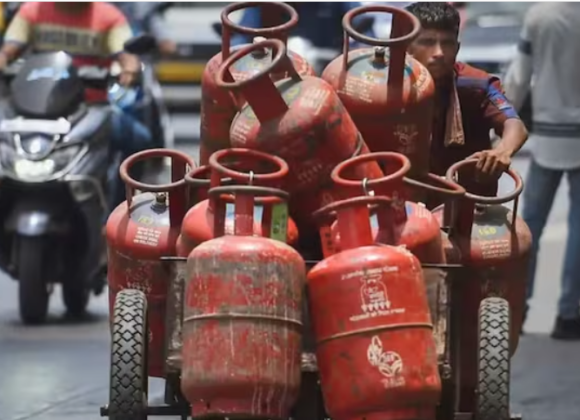India’s Constitution guarantees every citizen the right to freedom of speech and expression, making it a cornerstone of our democracy. This fundamental right empowers individuals to voice opinions, question authority, and participate in public discourse. However, this freedom is not without limits. In an era where divisive rhetoric spreads quickly—especially online—the line between free speech and hate speech has become increasingly blurred. As debates intensify over what counts as expression and what crosses the line into harm, it’s vital to understand what the Indian Constitution actually says about both.
What Does Article 19(1)(a) Say?
Article 19(1)(a) of the Constitution of India guarantees every citizen the right to freedom of speech and expression. This right forms the backbone of democratic governance, ensuring that individuals can freely express their views, ideas, and criticisms without fear of punishment or censorship by the state. It covers various forms of expression including spoken words, written publications, art, films, media, internet posts, and even symbolic gestures such as protests or demonstrations.
The scope of this freedom is wide and includes:
- The right to express one’s political opinions
- The right to criticize government policies
- The freedom of the press
- The right to communicate ideas through modern platforms like social media
However, it is important to note that this right is available only to citizens of India, not foreign nationals, and it does not extend to corporate entities in the same sense as individuals. Additionally, it ensures positive liberty, meaning the state is expected not to interfere arbitrarily but also to protect the conditions necessary for meaningful expression.
While Article 19(1)(a) affirms the democratic principle of open dialogue, its interpretation and application are constantly evolving through judicial decisions, especially in cases involving digital expression, protests, or media freedom.
Reasonable Restrictions: Article 19(2)
While Article 19(1)(a) of the Indian Constitution grants the right to freedom of speech and expression, this right is not absolute. To maintain public order, protect national integrity, and prevent misuse of this freedom, the Constitution permits the State to impose “reasonable restrictions” under Article 19(2).
Article 19(2) allows the government to restrict speech if it threatens or undermines any of the following:
- Sovereignty and integrity of India – To prevent speech that challenges the unity or borders of the nation.
- Security of the State – To curb speech that could incite violence or rebellion.
- Friendly relations with foreign States – To avoid statements that might damage diplomatic ties.
- Public order – To stop speech that could lead to riots, unrest, or violence.
- Decency or morality – To limit obscenity or offensive content that violates societal standards.
- Contempt of court – To ensure that judicial integrity is not compromised through defamatory or scandalous remarks.
- Defamation – To protect an individual’s reputation from false or damaging statements.
- Incitement to an offense – To prevent speech that provokes people to commit illegal acts.
These restrictions are termed “reasonable” to ensure that they do not arbitrarily suppress free speech. The judiciary plays a key role in determining whether a specific restriction is justified, often balancing individual liberty with collective social interests.
In essence, Article 19(2) serves as a constitutional safeguard, ensuring that freedom of speech is exercised responsibly and does not become a tool for harm, hatred, or chaos.
What Is Hate Speech?
Hate speech refers to any form of expression—spoken, written, or symbolic—that seeks to promote hatred, violence, discrimination, or hostility against individuals or groups based on attributes such as religion, caste, ethnicity, gender, language, nationality, or sexual orientation. While the term “hate speech” is not explicitly defined in the Indian Constitution or the Indian Penal Code (IPC), various laws and judicial interpretations have shaped our understanding of it.
In general, hate speech is characterized by:
- Deliberate targeting of a community or individual with the intent to demean or incite hostility
- Provocation that may lead to violence, public disorder, or disruption of peace
- Messages that reinforce stereotypes, inflame existing tensions, or promote social division
In India, several legal provisions are used to address hate speech:
- Section 153A of the IPC: Punishes promoting enmity between groups based on religion, race, language, etc.
- Section 295A of the IPC: Deals with deliberate and malicious acts intended to outrage religious feelings.
- Representation of the People Act, 1951: Bars hate speech during elections to protect the fairness of the democratic process.
It is important to note that not all offensive or unpopular opinions qualify as hate speech. The key factor is whether the speech crosses the line from mere expression into incitement of harm or hatred. The Indian judiciary has repeatedly emphasized the need to balance the right to free speech with the responsibility to maintain public order and communal harmony.
Judiciary’s Stand on the Balance
The Indian judiciary has played a crucial role in interpreting the fine line between freedom of speech and hate speech, often acting as a guardian of both individual rights and public interest. Courts have consistently upheld that while free speech is fundamental to democracy, it cannot be allowed to threaten public order, dignity, or national integrity.
One landmark judgment was in Shreya Singhal v. Union of India (2015), where the Supreme Court struck down Section 66A of the Information Technology Act, which had been widely misused to arrest individuals for online posts. The Court clarified that only speech that incites “imminent violence” or “public disorder” can be restricted. Mere annoyance or unpopular views are not grounds for censorship.
In Pravasi Bhalai Sangathan v. Union of India (2014), the Supreme Court recognized the rising menace of hate speech and urged the government to frame stricter laws. However, it also emphasized the importance of not stifling legitimate criticism or debate in a democracy.
In other cases, such as S. Rangarajan v. P. Jagjivan Ram (1989), the Court ruled that freedom of expression can only be restricted when there is a clear and present danger to society, not just because a statement may be offensive to some.
These judgments reflect the judiciary’s nuanced approach—protecting free expression, but drawing a clear boundary when speech becomes a tool for violence, hatred, or discrimination. The courts continue to reinforce the idea that freedom and responsibility must go hand in hand in a democratic society.
The Challenge of Social Media
Social media has revolutionized free expression, but it has also made it easier for hate speech to spread rapidly and anonymously. Harmful content can incite violence and deepen social divides, posing serious challenges for regulation. While laws like the IT Rules 2021 aim to curb online abuse, they also raise concerns about censorship and suppression of dissent. Tech platforms struggle to balance free speech with responsible moderation, often caught between public pressure and legal demands. The key challenge is to ensure that social media remains a space for open dialogue without becoming a tool for hate or misinformation.
Final Thoughts
Freedom of speech is a cornerstone of Indian democracy, but it comes with responsibility. The Constitution protects our right to express ourselves, but it also draws a line when speech turns harmful, hateful, or disruptive to public order. In a diverse country like India, striking the right balance between open expression and social harmony is essential. As citizens, it’s important to use this right wisely—promoting dialogue, not division—and to remember that with every freedom comes the duty to respect others.



